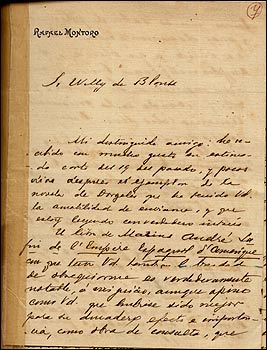3.7.7 Rafael Montoro’s (1852 – 1933) forays into literary criticism

Rafael Montoro, while excelling in political oratory in his time, also conceived as an academic speeches and conferences important for the art and literature of the island. Many of his ideas appear excellently expressed in his text “Music and the Philosophy of Art”, to which are added others in which he intermingles critical judgments worthy of attention.
His piece, “Realism and Dramatic Art,” is interesting in that it vindicates the need to study the genre and offers some precepts for its cultivation and appreciation. The judgments he makes actually have implications for other genres; they go beyond them and have long been a source of polarized reflection, such as his conception that art should focus on beauty and ignore social eschatology, to name all the negative aspects that plagued society in the physical and moral spheres.
In the prologue to a posthumously published work by Aurelio Mitjans, “The Scientific and Literary Movement of the Island of Cuba,” Montoro assumes that Africanism was undermining Cuban theater, a judgment latent in a certain racism and a desire for dramatic motifs imported from Europe. He also worried about the public’s attitude toward the art of the stage.
Some of his critical exercises have impressionistic traces and a rhetoric that imitates literature itself, as is the case with the text entitled “Alfred de Musset,” in which he studies the life and work of the French poet and narrator in a few pages.
Montoro had achieved a certain recognition in Spain, where he resided throughout the decade of the Ten Years’ War, between 1868 and 1878. In a dissertation by the Spanish writer and academic Francisco de Paula Canalejas, entitled “Dramatic Poetry in Spain,” he repeatedly refers to Montoro’s ideas on literature, such as his fear of “the intrusion of the government into the sacred spheres of thought” and also mentions “the brilliant vehemence of Mr. Montoro, rich in inspirations, whenever he focuses his attention on the most noble ideas of science, liberty and progress.”
Despite somewhat reducing the Cuban cultural universe to the European and particularly Spanish heritage, he did not fail to recognize the works of José María Heredia, Gertrudis Gómez de Avellaneda and Gabriel de la Concepción Valdés (Plácido) as being of high lyrical scope, comparable to the best poetic pieces created on the European continent, and to be concerned about the development and reception of native literature.








